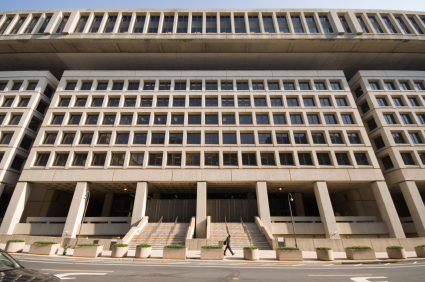 By Aaron Mehta
iwatch news
By Aaron Mehta
iwatch newsCenter for Public Integrity In a rare show of bipartisanship, both Congressional Democrats and Republicans have come out in support of President Barack Obama’s recent request to extend Robert Mueller’s decade-long tenure as FBI director.
But for all his accomplishments, Mueller has failed at the same IT management task that bedeviled his predecessor and has cost taxpayers hundreds of million of dollars — the development of a computerized case tracking system within the bureau.
When FBI director Louis Freeh installed the Automated Case Support (ACS) system in 1995, it was supposed to be a top-of-the-line technological marvel that would streamline sharing information in the bureau. Created with 1980s technology, however, the ACS was outdated by the time it was installed, and its many flaws — including an inability to “connect the dots” — were starkly revealed in the aftermath of the Sept. 11, 2001 attacks.
When Mueller first arrived at the bureau — just a week before 9/11 — he set about creating his own technological revolution. Mueller sunk tens of millions of dollars into tech upgrades, including a program called the Virtual Case File (VCF) that would replace the ACS
The VCF, conceived in 2001, was supposed to create a case-management hub through which FBI agents could easily share information, including the millions of case files already in the FBI’s database.
Four years and $170 million later, the FBI pulled the plug on the VCF. Some critics blamed contractor Science Applications International Corp., while others pointed to a lack of leadership as the bureau went through four chief information officers in just three years. Mueller himself shouldered some of the blame: “I did not do the things I should have done to make sure that [the VCF] was a success,” he said in 2006. The program was scrapped, and the government had to eat the costs and begin anew.
The FBI went back to the drawing board and began working on the next iteration of a case management system, called “Sentinel,” in March 2006. As with VCF, Sentinel was mostly designed by an outside firm – in this case, a $305 million contract was awarded to Lockheed Martin Corp.
Sentinel’s development was to be broken into four overlapping phases with a September 2009 deadline and a total cost of $425 million. The completion date was delayed until June 2010 as the cost bumped up to $451 million.
But a Justice Department Inspector General report later found that by August 2010, only two of its four development phases had been completed. Even in the two finished ones, the IG found that several promised requirements were missing, and that the programs put in place had not “substantially improved the efficiency with which FBI employees can create case documents. Thus, users may have little incentive to use Sentinel.”
Worse yet, the project had already spent $405 million of its $451 millon budget — while “the most challenging development work for Sentinel still remains,” the IG said. Meanwhile, an independent auditing group told the government that it would cost an additional six years and another $351 million to complete the project.
In the meantime, the FBI had — in July 2010 — issued a stop-work order to Lockheed. In September, the bureau announced it would be moving the development of the system primarily in-house, with Lockheed providing support. Today, almost 18 months after Sentinel was scheduled to go online, it remains a work in progress. The FBI’s chief information officer, Chad Fulgham recently said that a version of Sentinel should be basically up and running over the summer, with a broader release is planned for September.
Mueller’s 10-year tenure is scheduled to end in September. President Obama is seeking to extend it through September 2013, and Congress seems inclined to agree. The limit for FBI directors was put into place by Congress following the death of J. Edgar Hoover, who controlled the bureau for almost 50 years.
Reprinted with the permission of the Center For Public Integrity.





